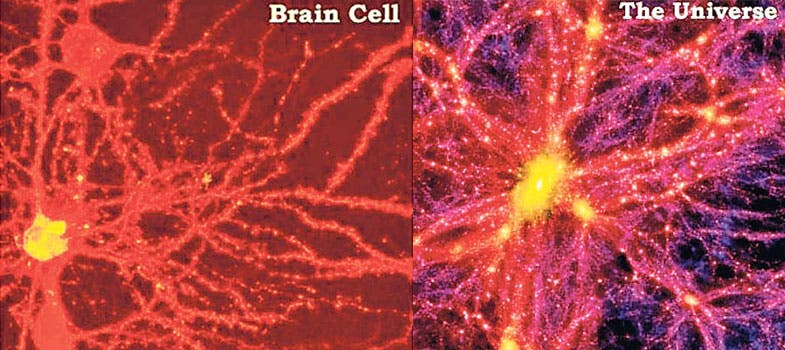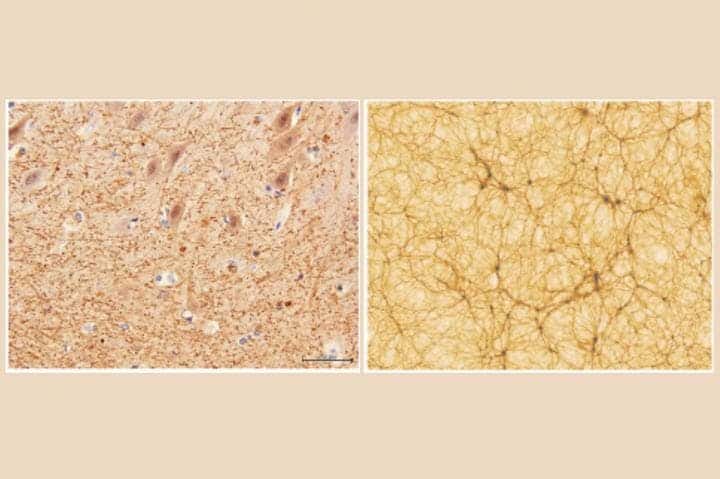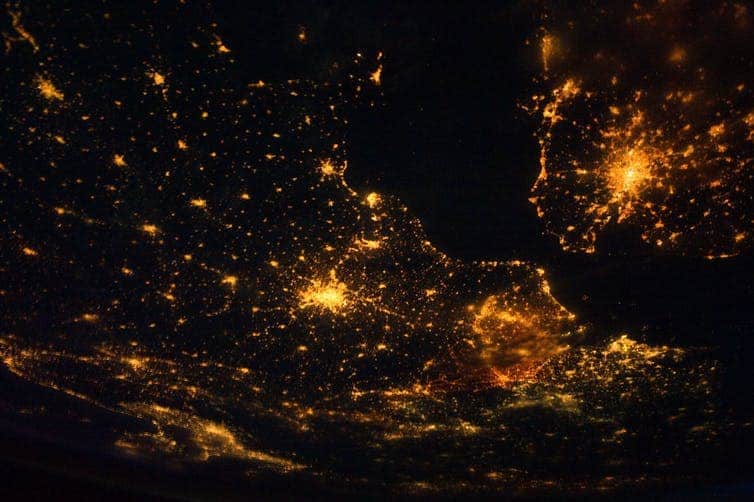
Side by side pictures of brain cells and a cosmic web of galaxies make it difficult to tell the two apart. So it can seem that the universe is like one giant brain or vice-versa, there’s a tiny universe in each of our brains. That’s not merely some entertaining thought. In a new study, an astrophysicist and a neurosurgeon have documented the striking similarities between cosmic networks of galaxies and neural networks of brain cells.
The mini-cosmos inside the brain
Alberto Feletti, a neurosurgeon at the University of Verona, and Franco Vazza, astrophysicist at the University of Bologna, performed a quantitative analysis of neural and cosmic networks, showing that the natural physical processes lead to similar structures even when differences in scale can be greater than 27 orders of magnitude.
The human brain contains approximately 69 billion neurons, whereas the observable universe consists of a web of at least 100 billion galaxies. In both galactic and neural networks, just 30% of their masses are composed of ‘working’ masses, such as galaxies and neurons. The rest of the 70% of matter plays an apparently passive role: water in the brain and dark energy in the observable cosmos, the authors wrote in Frontiers in Physics.
The pair of Italian researchers also performed side by side comparisons between simulations of galactic and neural networks in order to see how matter fluctuations scatter over the two scales.
“We calculated the spectral density of both systems. This is a technique often employed in cosmology for studying the spatial distribution of galaxies,” Vazza said in a statement. “Our analysis showed that the distribution of the fluctuation within the cerebellum neuronal network on a scale from 1 micrometer to 0.1 millimeters follows the same progression of the distribution of matter in the cosmic web but, of course, on a larger scale that goes from 5 million to 500 million light-years.”
Next, the researchers computed the average number of connections in each node for both neural and cosmic networks, and analyzed their tendency to cluster together in relevant central nodes with the network.
“Once again, structural parameters have identified unexpected agreement levels. Probably, the connectivity within the two networks evolves following similar physical principles, despite the striking and obvious difference between the physical powers regulating galaxies and neurons,” adds Alberto Feletti. “These two complex networks show more similarities than those shared between the cosmic web and a galaxy or a neuronal network and the inside of a neuronal body”.

Fractals are everywhere
These similarities are truly striking, but what can explain them? The cosmos has been shaped by the laws of physics and the forces that govern it, such as gravity and dark matter. The brain is shaped by biological processes, most important of which is evolution. Over the course of many generations, the human brain has adapted to a certain structure that is most adapted to our environment. But the brain is ultimately made of atoms and molecules, just like the rest of the universe.
What ties the brain and the cosmos at large together are fractals, which are mathematical structures that look the same regardless of how close or far away you observe them. Besides the brain and galaxies, other naturally occurring fractal structures include the path taken by rivers down to the ocean or the delicate shape of a snowflake. Even our cities look a lot like fractals, showing that we inadvertently follow the laws of nature simply because that’s the efficient way to go about things.







